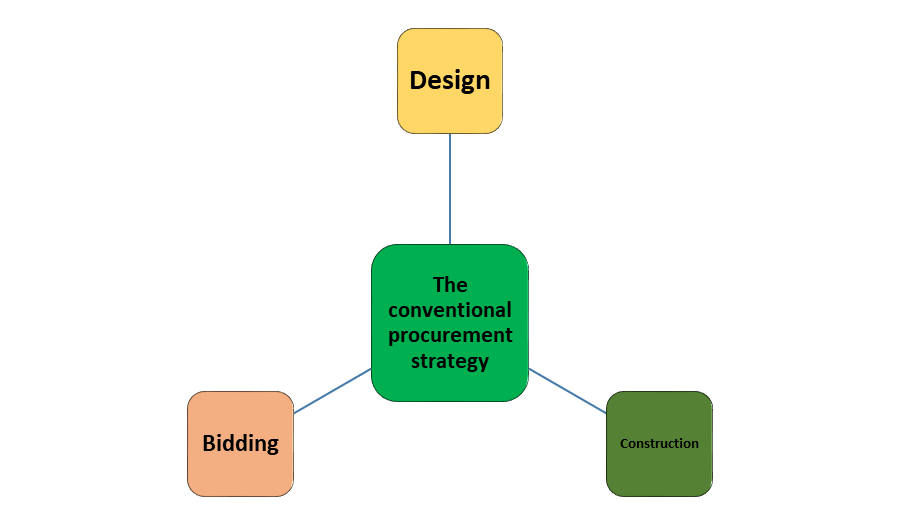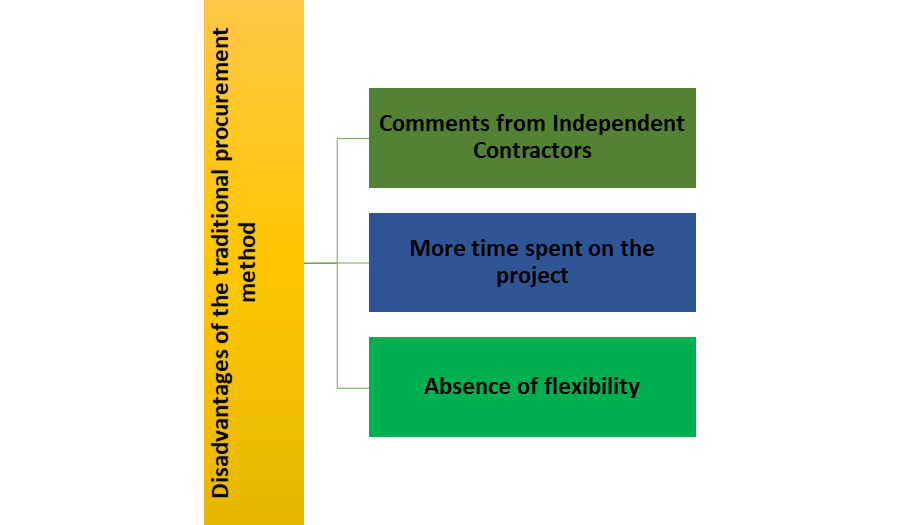- Legal System, Contract Administration and Health & Safety
- Part 1: Legal System, Health Safety, and Tort Law
- Contract Law Concepts
- Law and Cases
- The legal implications and Issue
- Recommendation to Minimize Risk
- Three health and safety regulations
- Legal liability
- Part 2: Contract Administration and Dispute Resolution
- The traditional method of procurement
- The following are some advantages of the traditional procurement method
- The following are the disadvantages of the traditional procurement method
- Recommendations for ensuring the success Of JCT Contracts
- Delays in the project
- Alternative Dispute Resolution
Legal System, Contract Administration and Health & Safety
Are you in need of online assignment help in the UK with AI-free case study? Look no further than Native Assignment Help. We have a dedicated team of professionals who are committed to delivering customized support for your academic needs and ensuring that you get excellent marks on all your assignments.
Part 1: Legal System, Health Safety, and Tort Law
The construction industry in the United Kingdom is governed by a complex set of laws and regulations with the goals of ensuring worker safety, preserving the environment, and encouraging fair competition. One of the most pressing concerns in this sector is contract management, which can be challenging due to the high risk involved. This paper will investigate the legal aspects of contract administration within the UCB construction industry. It has a genuine case to ensure an extra £10,000 for selecting extra staff.
Contract Law Concepts
A contract is a legally binding agreement between two or more parties that lays out the terms and conditions of the agreement. An agreement should meet specific legitimate necessities to be enforceable (Adams-Prassl, 2019). The four essential components of a contract are the offer, acceptance, consideration, and the intention to establish legal relations. The agreement's specifics, including the thought, should be crystal clear. The two players most likely expected to make legal relations, which can be displayed by the way that they denoted a made understanding.
Law and Cases
Case guideline expects a principal part in the interpretation and utilization of understanding guideline norms. In the construction industry, a lot of cases have set important precedents that can help figure out if UCB's claim for an additional $10,000 is legal. For example, because of D and C Makers Ltd v Rees [1966] EWCA Civ 2, the court held that a party couldn't decline to pay a remarkable commitment by mentioning a higher aggregate than the initially agreed understanding (Cleere, 2020). Similarly, the court said in Latham v. The Ritz Hotel Ltd. (1993) EWCA Civ 6 that a party can't get more money for work that was already in the original contract. These precedents, UCB's claim for an additional £10,000 may not be legally valid if it is based on work that was already included in the original contract. The disputed work was not included in the initial contract and UCB hired additional employees to complete it, the company may be entitled to additional compensation.
The legitimate issues encompassing agreement organization in the development business are additionally made sense of by various scholastic references. The Joint Contracts Tribunal (JCT) makes well-known contract forms that are used in the industry standard. These contracts are designed to be fair to both parties and to provide a clear framework for contract administration (Davis, 2020). The development business' requirement for viable undertaking the executives risk the board, and clear agreement terms is accentuated in scholastic writing. UCB ought to ensure that its agreement terms are clear and unambiguous and that it has powerful venture the executives and hazard the board methods set up in view of these scholastic references.
The legal implications and Issue
On the off chance that development work is begun without a proper agreement, it could have significant lawful consequences and seriously jeopardize the undertaking's two gatherings. Arguments, miscommunications, and financial losses that ultimately harm the company's reputation may occur without a formal agreement. The meaning of a conventional agreement in the development area should be underscored. A contract lays out the terms and conditions of the project, such as the scope of work, deadline, payment terms, and who is responsible for what. The company exposes itself to potential legal issues that may arise during the project by not having a valid agreement. Neither party is aware of their health and safety responsibilities because there is no formal contract. Noncompliance with health and safety regulations can result in injuries, fatalities, and legal fees for the business. There is a chance that the project won't be finished on time or within budget if there isn't a formal contract. The business's reputation and both parties could suffer financial losses.
Recommendation to Minimize Risk
To avoid these dangers, the business should always sign a formal contract before beginning any construction work. Legitimate experts ought to compose an agreement that obviously frames the venture's extension, timetable, installment terms, and the well-being and security obligations of the two players (Dennerlein, et al. 2020). Furthermore, the agreement should contain instruments for settling debates and punishments for resistance. There could be significant risks for the business and serious legal consequences if construction work is started without a formal contract. The company should always seek legal advice before entering into any contract to ensure compliance with all health and safety regulations.
Three health and safety regulations
The construction industry is known for its high-risk activities that can lead to accidents, injuries, and even fatalities if proper safety precautions are not taken. In order to protect their workers and the public as a whole, development companies must prioritize safety and well-being guidelines. The project will discuss three well-being and security guidelines that apply to this sort of task, what an organization's legitimate obligation of care is under the law, and how they might meet the necessities of the guideline.
- Regulations for Construction Design and Management (CDM) from 2015: The CDM regulations, which aim to ensure that health and safety considerations are incorporated into project design, planning, and execution, apply to all UK construction projects. The regulations impose a duty of care on the client, principal designer, and principal contractor, depending on the stage of the project. They should design, make due, and screen the development work to guarantee its wellbeing as per the obligation of care (Elnaiem, et al. 2023). A company can meet the requirements of the CDM regulations by hiring a competent principal designer and principal contractor, creating a comprehensive construction phase plan that outlines the health and safety risks and how they will be mitigated, providing workers with the appropriate training and equipment, and regularly reviewing and updating the health and safety plan throughout the project.
- The Safety and Well-Being at Work, among other things. 1974 Demonstration (HSWA): In the Unified Realm, the essential piece of regulation overseeing working environment wellbeing and security is the HSWA. The Show puts a general commitment on organizations to ensure, like really practicable, the prosperity, security, and government help of their agents and anything others who could be influenced by their work works out. The duty of care requires employers to assess the risks posed by their work and take measures to reduce or eliminate them (Henisz, et al.2019). Functional measures that an organization can take to meet the requirements of the HSWA include providing workers with adequate information and preparation for the risks associated with their work activities, providing appropriate personal protective equipment (PPE), ensuring that work gear is appropriately maintained and safe to use, leading regular risk assessments, and implementing appropriate control measures.
- The 1999 Guidelines for the Administration of Wellbeing and Security at Work: The Management of Health and Safety at Work Regulations require employers to assess the risks that their work activities pose to their employees and anyone else who might be affected by them and to take the necessary measures to reduce or eliminate those risks. The regulations require employers to establish a written health and safety policy and to appoint a competent individual to assist them in carrying out their duties regarding health and safety (Lee, 2021). An organization can meet the prerequisites of the Administration of Wellbeing and Security at Work Guidelines by creating and implementing a complete well-being and well-being strategy, naming an equipped wellbeing and well-being official, giving specialists customary wellbeing and well-being preparing, and exploring and refreshing the wellbeing and security strategy consistently.
Health and safety regulations must take priority in the construction industry, which is a high-risk sector, to protect workers and the public. The CDM guidelines, the HSWA, and the Administration of Wellbeing and Security at Work Guidelines are three well-being and security guidelines that can be applied to a task of this sort. In order to comply with these regulations, businesses can take practical measures such as appointing a competent individual to oversee health and safety, providing workers with the appropriate training and equipment, carrying out regular risk assessments, and regularly reviewing and updating the health and safety policy.
Legal liability
UCB is a construction company, it must ensure the safety of its employees and visitors when they are on its property. They could be held liable for any injuries if you breach this duty of care. The six years old boy, may be held accountable by UCB for the injuries he sustained on the construction site.
Carelessness and the risk of occupiers are the principal legitimate ideas that would apply in this occurrence. Carelessness occurs when a party fails to exercise reasonable caution in order to avoid harming other people (Lingard, 2019). UCB may be found negligent in this instance if it is determined that the company did not take reasonable precautions to protect visitors, including children. In contrast, occupiers' responsibility holds that the owner of a property is responsible for making sure guests are safe while they are there.
UCB may be able to counter the liability claim with some defenses. The kid entered the construction site illegally, so the company had no responsibility to care for him, according to one potential guard. In any case, in the event that the building site was not sufficiently gotten and a kid could undoubtedly get entrance, this safeguard probably won't hold up. The way that the kid's folks were accountable for administering him and ensuring he didn't enter the building site is another safeguard. On the off chance that it very well may be exhibited that the guardians knew about the risk and neglected to play it safe to keep their youngster from entering the area, this protection might be substantial.
In order to exempt the company from liability, UCB may argue that the boy's own carelessness was to blame for the injury. The 6years old boy may be held liable for his injuries on UCB's construction site if it is determined that the company failed to take reasonable precautions to protect visitors. In any case, the business might have the option to utilize a few protections, like contending that the kid was intruding or that the injury was brought about by the kid's own lack of regard. The end result of any legal action would ultimately depend on the particular circumstances of the case and the evidence presented.
Part 2: Contract Administration and Dispute Resolution
The traditional method of procurement
Traditional procurement is one of the oldest and most common approaches to construction projects. Through a competitive bidding process, a contractor will be selected. Because of the consecutive course of planning the venture, welcoming offers from workers for hire, and afterward developing the undertaking, this strategy is otherwise called the Plan Offered Fabricate technique (Melnick, 2020). For the UCB construction project, the conventional procurement strategy can be used as follows.
- Design: An expert in design, such as an architect or engineer, is hired by the project's owner, UCB in this instance.
- Bidding: After the design is finished, the project owner asks contractors for bids for the project's construction. The charges for the worker for hire and the cost of materials are typically included in the offers.
- Construction: The contractor with the lowest bid wins the project, and that contractor is in charge of constructing it in accordance with the design.

Figure 1: The conventional procurement strategy
The following are some advantages of the traditional procurement method
- Simple Structure: Because the design is finished before bidding begins, the project owner can guarantee that it meets their requirements and is clear and well-defined. During development, this lowers the likelihood of errors between the proprietor and the hired worker.
- Options That Are Economical: Project workers are urged to submit costs that are cutthroat by the serious offering process. This can help the endeavor owner with getting the best motivator for their money.
- Cost per unit: Because the contract price is set before work begins, there is no risk of overspending for the project owner.

Figure 2: Advantages of the traditional procurement method
The following are the disadvantages of the traditional procurement method
- Comments from Independent Contractors: Contractors may encounter difficulties or inefficiencies during construction due to their limited involvement in the project's design.
- More time spent on the project: Due to the sequential design, bidding, and construction phases, projects may take longer to complete. If the owner of the project needs the project finished quickly, this could be a problem.
- Absence of flexibility: There is limited flexibility to make adjustments to the task without incurring additional costs once the project configuration has been completed and the worker for hire has been selected.
The UCB construction project can be obtained in a conventional manner by obtaining bids from contractors, hiring a design professional to create the project's design, and selecting the lowest bidder. The traditional method of procurement has advantages like clear design, competitive pricing, and fixed prices, there are limitations on flexibility, a longer project duration, and limited contractor input (Ogetii, 2019). The method of procurement should be determined by the particular requirements and requirements of the project owner.

Figure 3: Disadvantages of the traditional procurement method
Recommendations for ensuring the success Of JCT Contracts
The construction organization UCB construction limited is responsible for the undertaking's effective finish. The business has a number of duty holders who are responsible for ensuring that the project is finished safely and in accordance with the rules. JCT Contracts, the primary duty holders are the employer, the contractor, and the contract administrator. Each of these individuals has specific responsibilities and obligations that they must fulfill in order to ensure the success of the project.
The company is responsible for providing the initial financing. The business is responsible for guaranteeing that the task is finished on time and inside the financial plan. The employer must ensure that the contractor is held accountable for any overruns in costs and that the contract is properly negotiated (Pierce, 2019). The employer must ensure that any changes to the work scope are handled appropriately and that the project has sufficient funds.
The contractor is obligated to complete the project in accordance with the contract. The project's quality and safety standards, the contractor must ensure that the project is completed within the allotted budget. It is the contractor's responsibility to document and address any cost overruns in accordance with the contract as per Joint Contracts Tribunal law, 1983.
The legal system, health and safety regulations, and contract administration all have the potential to result in severe consequences. Fines, legitimate activity, postponements, and cost invasions are all possible outcomes of rebellion. The project's success may be significantly impacted by these issues, which may result in delays, excessive spending, and harm to the business's reputation.
In the current project, it is suggested that UCB Construction Limited take a number of measures. The company ensures that it has sufficient staff members with sufficient expertise and experience to manage the project effectively the business needs to make sure that it has enough money and that any cost overruns are handled properly. The company ought to ensure that it employs a competent contract administrator who is capable of managing the contract and any changes to the work scope in an efficient manner according to section 5 of Joint Contracts Tribunal law, 1983.
At UCB Construction Limited, a number of duty holders are responsible for the project's success. Compliance with contract administration, health and safety regulations, and the legal system are essential for the project's success (Susskind, 2023). Fines, lawful activity, postponements, and cost climbs are potential results of resistance. UCB Development Restricted needs to take a few steps to ensure the project's success, such as ensuring that it is adequately staffed, adequately subsidized, in full compliance with all material guidelines and has a competent agreement head set up.
Delays in the project
| Delay event | Duration | Reason |
| External work delayed by the contractor’s team | 3 Weeks | Contractor’s team losing key personal |
| Electrical sub-contractors work delayed | 2 weeks | Delays main contractor’s work |
| Variation introduced by the client's | 5 days | Variation requested by the clients' |
| Delayed materials delivery from Italy | 4 weeks | BREXIT |
| Insolvency of nominated heating sub-contractors | 5 weeks | Nominated sub-contractors becoming insolvent |
| Opening work for inspection and testing | 3 days | Part of covered work did not conform to the contract |
| Exceptionally adverse weather Condition | 10 days | Adverse weather condition in month 5 |
| Sub-contractor(Plumbing) delays in delivering materials | 3 weeks | Named sub-contractor delaying in delivering materials |
Table 1: Delays in the project
The legal justification for allocating delays between the client and the worker for hire when there is simultaneousness depends on the specifics of the agreement. The client and the worker for hire can both distribute defers simultaneously under the majority of development contracts. Generally speaking, the client will be qualified for exchange harms and the worker for hire will be qualified for an expansion of time for any defer brought about by the worker for hire. The assignment of simultaneous deferrals can be muddled and habitually requires an inside and out assessment of the specifics of each case.
UCB Construction Limited is entitled to a delay of at least 2.5 months due to the preceding excusable delays. The distribution of simultaneous delays will be contingent on the specifics of the agreement as well as careful examination of the current circumstances and circumstances of each delay occasion.
Alternative Dispute Resolution
The use of Alternative Dispute Resolution (ADR) as per law of modification, 2000. Section 273 of this concerned law have demonstrated methods to settle disputes is rising in the construction industry. The two most typical approaches are:
- Mediation: A nonpartisan outsider is selected to work with discussions between the gatherings in intervention. The role of the intermediary is to help the parties reach a consensus by identifying areas of disagreement and working to split the difference. Intervention is a private meeting that can be more cost-effective and less time-consuming than going to court.
- Arbitration: In arbitration, where the parties present their dispute to the arbitrator, a decision made by a neutral third party is final and binding (Zhang, 2019). The mediator's choice is conclusive and restricting, and it tends to be speedier and less formal than going to court.
The recommended intercession as the best alternative dispute resolution (ADR) method for resolving the time and cost issues in this situation after basically evaluating the other options. Dissimilar to intervention, which requires a limiting choice, intercession is a cooperative interaction that permits the gatherings to arrive at a commonly pleasing settlement. In the development business, where progressing connections are normal, intercession can likewise safeguard connections between the gatherings. Intercession is ideal for the development business since it is a quick and viable method for resolving debates. By choosing mediation, the parties can maintain their business relationship while avoiding costly and time-consuming litigation.
Reference List
Journals
Adams-Prassl, J., 2019. What if your boss was an algorithm? Economic Incentives, Legal Challenges, and the Rise of Artificial Intelligence at Work. Comp. Lab. L. & Pol'y J., 41, p.123.
Cleere, H., 2020. Introduction: the rationale of archaeological heritage management. In Archaeological heritage management in the modern world (pp. 1-19). Routledge.
Davis, G. and Rhodes, R.A., 2020. From hierarchy to contracts and back again: reforming the Australian public service. In
Dennerlein, J.T., Burke, L., Sabbath, E.L., Williams, J.A., Peters, S.E., Wallace, L., Karapanos, M. and Sorensen, G., 2020. An integrative total worker health framework for keeping workers safe and healthy during the COVID-19 pandemic. Human factors, 62(5), pp.689-696.
Elnaiem, A., Mohamed-Ahmed, O., Zumla, A., Mecaskey, J., Charron, N., Abakar, M.F., Raji, T., Bahalim, A., Manikam, L., Risk, O. and Okereke, E., 2023. Global and regional governance of One Health and implications for global health security. The Lancet.
Fatimah, Y.A., Govindan, K., Murniningsih, R. and Setiawan, A., 2020. Industry 4.0 based sustainable circular economy approach for smart waste management system to achieve sustainable development goals: A case study of Indonesia. Journal of Cleaner Production, 269, p.122263.
Henisz, W., Koller, T. and Nuttall, R., 2019. Five ways that ESG creates value.
Hewa, T., Ylianttila, M. and Liyanage, M., 2021. Survey on blockchain based smart contracts: Applications, opportunities and challenges. Journal of Network and Computer Applications, 177, p.102857.
Keskimaki, I., Tynkkynen, L.K., Reissell, E., Koivusalo, M., Syrja, V., Vuorenkoski, L., Rechel, B. and Karanikolos, M., 2019. Finland: Health System Review. Health systems in transition, 21(2), pp.1-166.
Lee, H., 2021. Changes in workplace practices during the COVID-19 pandemic: the roles of emotion, psychological safety and organisation support. Journal of Organizational Effectiveness: People and Performance.
Lingard, H. and Wakefield, R., 2019. Integrating work health and safety into construction project management. John Wiley & Sons.
Melnick, H. and Darling-Hammond, L., 2020. Reopening Schools in the Context of COVID-19: Health and Safety Guidelines from Other Countries. Policy Brief. Learning Policy Institute.
Ogetii, J.B., 2019. An Assessment of Occupational Health and Safety Practices at Construction Sites in Nairobi City Region, Kenya (Doctoral dissertation, university of nairobi).
Pierce, S., 2019. Immigration-related policy changes in the first two years of the Trump administration. Migration Policy Institute.
Salguero-Caparrós, F., Pardo-Ferreira, M.D.C., Martínez-Rojas, M. and Rubio-Romero, J.C., 2020. Management of legal compliance in occupational health and safety. A literature review. Safety science, 121, pp.111-118.
Siraj, N.B. and Fayek, A.R., 2019. Risk identification and common risks in construction: Literature review and content analysis. Journal of construction engineering and management, 145(9), p.03119004.
Stone, R.J., Cox, A. and Gavin, M., 2020. Human resource management. John Wiley & Sons.
Susskind, R., 2023. Tomorrow's lawyers: An introduction to your future. Oxford University Press.
Zhang, Q., Yu, Z. and Kong, D., 2019. The real effect of legal institutions: Environmental courts and firm environmental protection expenditure. Journal of Environmental Economics and Management, 98, p.102254.



